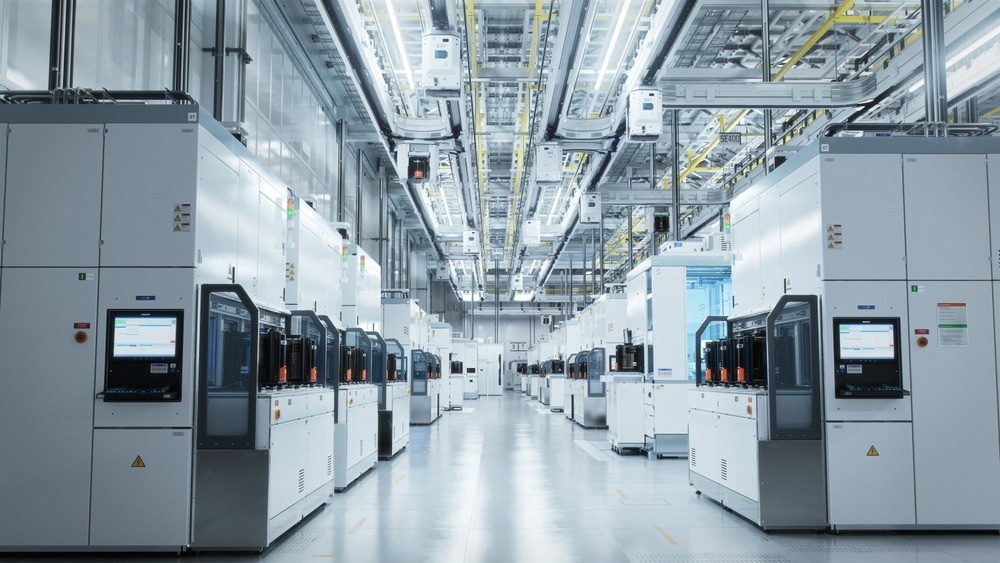Semiconductors, the building blocks of modern electronics, power everything from smartphones to advanced data centers. As society's reliance on these devices grows, so does the need for sustainable technology in semiconductor R&D (research and development). This article explores the relevance and importance of sustainable technology in semiconductor R&D, recent trends in the field, technical insights, and relevant studies that shed light on sustainable technology in semiconductor R&D.

Image Credit: IM Imagery/Shutterstock.com
Importance of Sustainable Technology in Semiconductor R&D
Environmentally Friendly Semiconductor R&D
The extraction and processing of the materials from which semiconductors are crafted (silicon, gallium arsenide, and other precious metals) are often energy-intensive and environmentally harmful. Sustainable technology in semiconductor R&D seeks to develop more efficient processes that reduce resource consumption and waste. With the increase in the global population, the demand for electronic devices has also increased, which puts immense pressure on semiconductor manufacturers to produce more while minimizing their environmental impact.
Sustainable Solutions for E-Waste
Energy consumption in semiconductor R&D is substantial, especially in fabrication plants, which also involves the release of greenhouse gases, contributing to climate change. Sustainable technology in semiconductor R&D aims to enhance the energy efficiency of semiconductor manufacturing processes, from chip design to production, exploring cleaner and more environmentally friendly production methods, reducing emissions and the industry's carbon footprint.
Similarly, electronic waste (e-waste) is another significant environmental concern since devices become obsolete at a rapid pace, and the disposal of outdated electronics contributes to pollution and resource depletion. Sustainable semiconductor technology focuses on designing longer-lasting, upgradable, and recyclable products.
Regulatory Compliance in Semiconductor R&D
In the quest for sustainable technology, semiconductor R&D has turned to advanced materials that offer higher energy efficiency and durability, making them essential for power electronics and renewable energy applications. Moreover, governments and international bodies are imposing stricter regulations on electronics manufacturing to protect the environment, encouraging sustainable technology in semiconductor R&D to ensure compliance with these regulations while proactively seeking eco-friendly solutions.
Recent Trends in Semiconductor R&D
Recent years have seen several noteworthy trends in semiconductor R&D, with sustainability at the forefront. Traditional semiconductor R&D involves two-dimensional (2D) chips, but 3D integration, which involves stacking multiple chip layers on top of each other, is an emerging trend that reduces the physical footprint and can lead to significant energy savings.
Another trend in semiconductor R&D is the integration of Artificial intelligence (AI) and machine learning to optimize energy consumption in semiconductor manufacturing processes, enabling real-time monitoring and adaptive control of equipment, resulting in energy-efficient fabrication processes. Similarly, semiconductor R&D is embracing the circular economy concept by designing products with end-of-life recycling and repurposing in mind, which reduces the environmental impact of e-waste.
Recent Relevant Studies
Sustainable Photocatalytic Semiconductor R&D
Researchers in a 2019 study explored sustainable technology in semiconductor R&D. With increasing industrialization, energy crises, and environmental pollution, sustainable solutions are vital. Photocatalytic technology offers a low-cost, eco-friendly, and promising approach to address these issues, although industrial applications remain challenging.
The study delves into the ideal photocatalyst's key features, emphasizing high efficiency, large surface area, full sunlight utilization, and recyclability. It covers semiconductor photocatalysis and challenges like limited absorption spectra, low quantum efficiency, and carrier recombination. Various methods are discussed to improve efficiency, including precious metal deposition, semiconductor compounds, and metal or non-metal ion doping. Researchers emphasize the technology's applications in hydrogen production and wastewater treatment, highlighting its potential in solving energy and environmental problems. The study recognizes the need for more efficient and stable photocatalysts to accelerate technology industrialization.
Enhancing Water Efficiency in Semiconductor R&D
In a 2023 study, researchers examined the sustainability of water usage in semiconductor R&D, which is both water and energy-intensive. They analyzed sustainability reports from 24 leading semiconductor corporations and identified their water strategies and practices. The semiconductor industry consumed 7.51 billion cubic meters of water and 139 billion kWh of energy in a year. To address the industry's water-intensive nature and environmental concerns, the study highlighted key water strategies, including water recycling, reuse, and restoration, with a focus on reverse osmosis for water treatment and separate treatment systems for wastewater.
The study also proposed a future water cycle system for semiconductor manufacturing parks, emphasizing multiple water sources, effective wastewater classification, and recycling. This research holds theoretical and practical significance for ensuring the semiconductor industry's sustainable growth while mitigating water-related challenges.
Sustainable Technology in Semiconductor R&D: Future Prospects
In the rapidly evolving realm of semiconductor R&D, sustainable technology is becoming pivotal. As the world's dependence on electronic devices grows, the demand for environmentally friendly semiconductor R&D intensifies.
Sustainable approaches aim to reduce energy consumption, lower emissions, and address the electronic waste problem. Recent trends, such as 3D chip integration and AI optimization, exemplify the industry's commitment to sustainability. Two notable studies have emphasized the potential of photocatalytic technology and improved water efficiency in semiconductor R&D to achieve sustainable solutions. Semiconductor R&D's future lies in fostering eco-friendly practices, ensuring efficiency, and sustaining competitiveness in an ever-changing landscape.
Semiconductor Innovations for a More Efficient and Connected Future
References and Further Reading
Jo, H. J., Connerton, T., & Kim, H. J. (2019). Dynamic outsourcing development for sustainable competitive advantage in a High-Tech backend semiconductor equipment firm. Sustainability. https://doi.org/10.3390/su12010155
Villarreal, S., Jimenez, J. A., Jin, T., & Cabrera-Rios, M. (2012). Designing a sustainable and distributed generation system for semiconductor wafer fabs. IEEE Transactions on Automation Science and Engineering. https://doi.org/10.1109/TASE.2012.2214438
Wang, Q., Huang, N., Cai, H., Chen, X., & Wu, Y. (2023). Water strategies and practices for sustainable development in the semiconductor industry. Water Cycle. https://doi.org/10.1016/j.watcyc.2022.12.001
Zhang, F., Wang, X., Liu, H., Liu, C., Wan, Y., Long, Y., & Cai, Z. (2019). Recent advances and applications of semiconductor photocatalytic technology. Applied Sciences. https://doi.org/10.3390/app9122489
Disclaimer: The views expressed here are those of the author expressed in their private capacity and do not necessarily represent the views of AZoM.com Limited T/A AZoNetwork the owner and operator of this website. This disclaimer forms part of the Terms and conditions of use of this website.